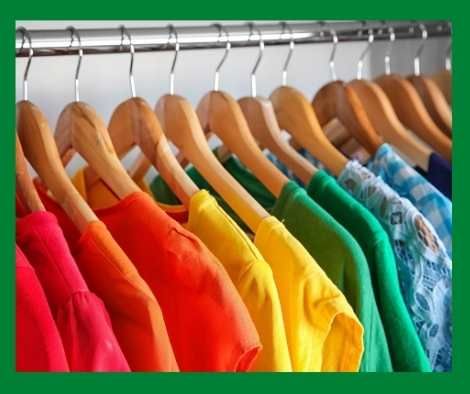Invisible protective shield against dirt: degradable nanoparticles permanently seal textiles
Experts warn that the increasingly fast pace of the textile market could have extreme consequences: with the falling appreciation, consumers' willingness to spend will also decrease in the long term. A Greenpeace survey from 2015 confirms that textiles are in danger of becoming cheap disposable items – with drastic consequences for the environment. One way to actively counteract this negative trend is to invest in high quality and sustainability. Especially in Germany, manufacturers still value high-quality materials, but these often wear out prematurely due to incorrect care by the customer. Here, a factory-made nano-sealing is recommended: The degradable nano-polymers it contains attach themselves to the fibers and pores of the surface to be protected and ensure that neither water nor dirt can penetrate. For example, shoes, bags or home textiles stay clean and new for longer - without affecting the look and feel of the finished product.
The hydrophobic treatment of textiles has great advantages
On the one hand, the fabrics can be effectively prevented from becoming soaked, on the other hand, the treated products soil more slowly. The currently most common form of water-repellent finish is impregnation - but it is facing increasing competition from so-called nano-sealing. "The most important difference between a nano seal and an impregnation is - as the name suggests - the size of the individual structures," explains Mike Friedrich, inventor and manufacturer of the "Nanotol" seal. "While the silicones of the impregnation form a 'layer', the nanoparticles, with their extremely small size of around one billionth of a meter, can coat and penetrate each individual fiber." In contrast to impregnations, they are not only invisible, they also change the feel of the product in no way.
But there are also big differences between the individual nano coatings. “Many agents have a chemical effect. However, this can result in either the surface being attacked or foul-smelling or sometimes toxic gases or aerosols being released as a result of reactions,” explains Friedrich. With Nanotol, on the other hand, the entrepreneur attached importance to a particularly gentle mode of action. The agent is a hybrid of silicon dioxide (SiO2) and water-based polymers. If Nanotol is applied to a surface – be it leather, cotton or polyester – the particles “dock” onto it without changing it chemically. Since Nanotol contains no fragrances or dyes, the seal can no longer be perceived by humans after it has dried.
The nanoparticles on the surface ensure that dirt and water no longer come into direct contact with the fibers and can penetrate into the textiles. Due to the large contact angle, the liquid does not wet the textile but rolls off. In this way, it can be easily wiped away with a dry microfiber cloth or, for more stubborn dirt, with a damp microfiber cloth without leaving any marks on the fabric. "Even wine stains can be removed so easily with a paper towel," notes the inventor.
Simple application
Before treatment with Nanotol, the textiles should be free of dirt and surfactants. For this reason, sealing ex works is particularly useful. This can be easily integrated into existing production processes: "One of our customers, for example, fills the rotating nozzles that are otherwise used for coloring with Nanotol and thus completely wets his products. The parts are then dried,” says Friedrich, describing the process. As a rule, application using the airless or spraying methods customary in the industry is possible without any problems.
If required, CeNano GmbH & Co.KG, founded by Mike Friedrich, through which Nanotol is produced and sold, offers manufacturers application support and supports their customers in developing their own quality assurance measures. "This is necessary because there are no official procedures for checking how it works," says Friedrich. Tests such as the water column are not very meaningful because they only check the water resistance. However, since Nanotol only encases individual fibers and does not close the spaces between the fibers, sealed textiles are open to vapor diffusion and therefore not waterproof under pressure.
Lifetime durability
If the sealing is not attacked by tensides - for example in the form of cleaning or washing agents - the effect usually lasts for several months, with regular refreshments even years. For this reason, it is particularly suitable for technical and Hei

